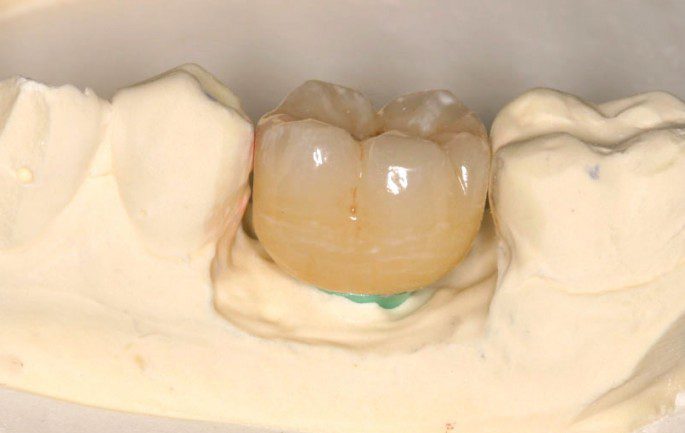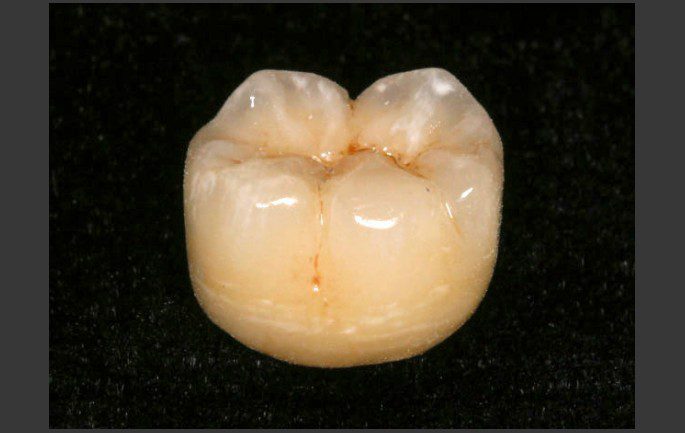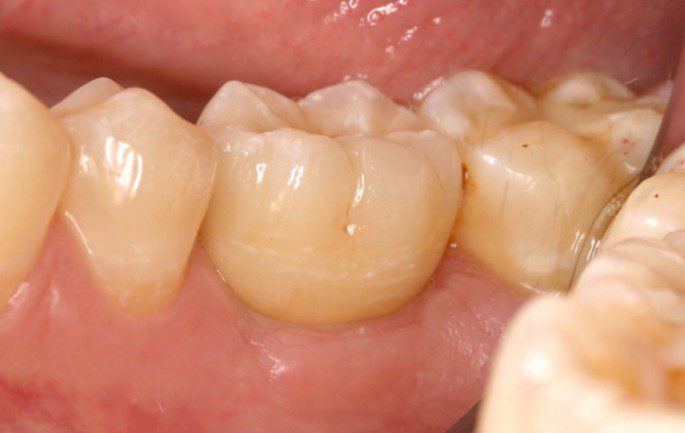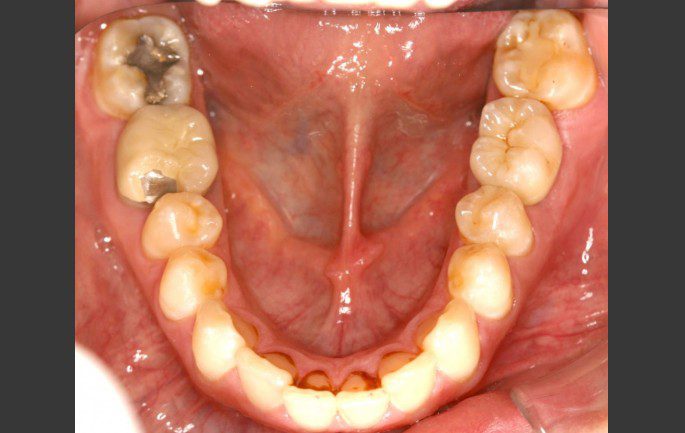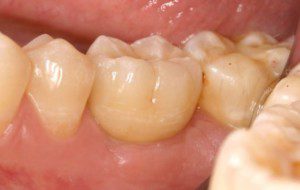
1 of 9
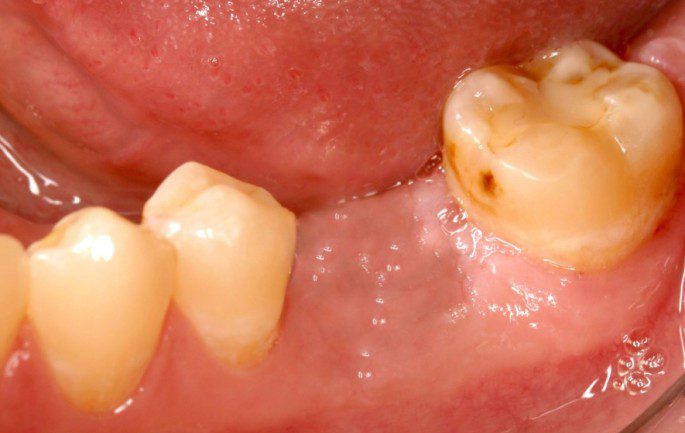
The lower 1st molar is the first molar tooth to erupt into the mouth, usually the first tooth to get a filling, a crown and a root canal. Consequently, it is often one of the first teeth to be extracted. Poor quality root canals are very common. Many patients are convinced to do their root canals at their general dental office instead of at an Endodontist's (root canal specialist) office. Outcomes are generally far better in specialty offices. Such was the case for this patient, a failed root canal that lead to the loss of this lower left first molar (tooth #19). Note, the excellent bone width and very healthy gum tissue. This is a perfect situation for a dental implant. The old-fashioned treatment was to restore the missing tooth with a fixed bridge which requires grinding down of the tooth in front and the one behind.
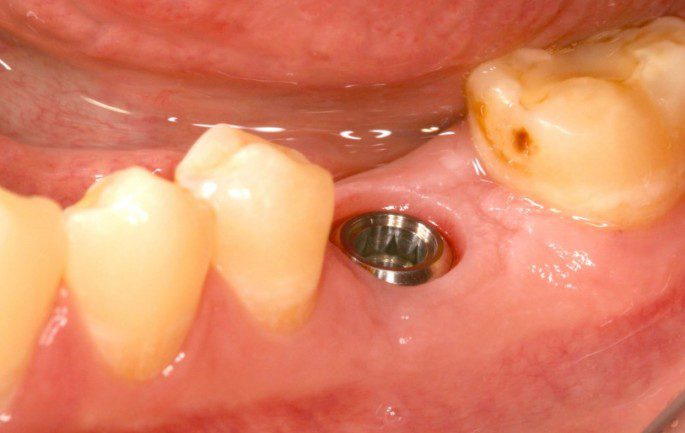
Dental implant placed and healed for two months. Note how perfectly positioned the implant, centered front to back and side to side. This may look easy but implant misplacement, meaning that the implant does not get placed "ideally", is the most common implant complication. Because the tolerances in the mouth are so small, misplacement by even 1.0 millimeter can change the contours, esthetics and cleansibility of the implant crown. Dental Implant Center doctors use "surgical guides" and intra-operative x-rays to assist us in proper implant placement and position.
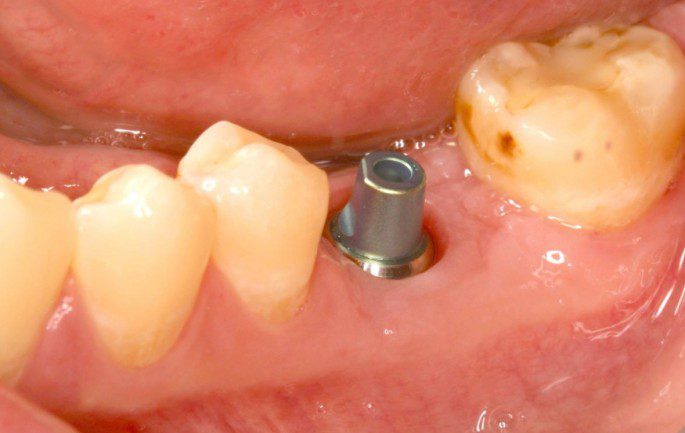
The implant "abutment" is threaded and tightened into the implant. The "abutment" is the intermediate titanium piece that will connect the implant crown to the implant. These come in many different shapes and sizes. There are two basic types of abutments: Standard Abutment- these are pre-formed by the implant manufacturer, the least expensive and can be used in the vast majority of cases. Custom Abutments- these are custom milled (at a dental milling center) from titanium blocks, the most expensive and very much overused in implant dentistry. Custom abutments are indicated when implants are excessively deep, excessively inclined or being used in conjunction with other implants that are not all parallel. The main reason custom abutments are overused is that the office can charge a lot more for them. We will only use custom abutments when a standard abutment will not work.
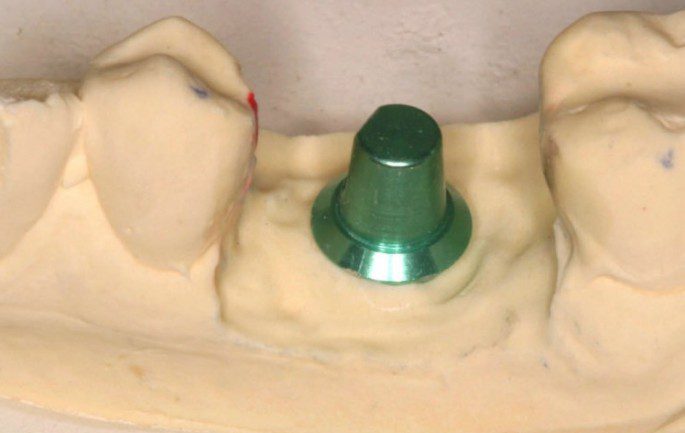
Abutment analog on the master dental model. This is a replica of what is in the mouth. The model also captures the exact position of the teeth beside and above so we can make the new crown to fit as precisely as possible.
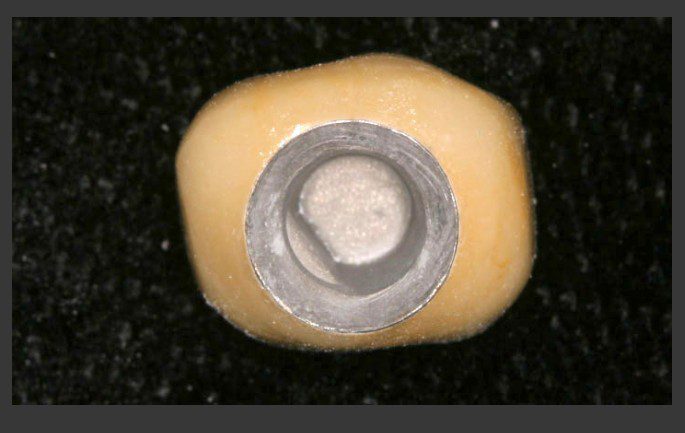
Internal view of the crown shows on flat side. Because all implants are fabricated through a milling process the final products are all cylinders (round). When a round crown is placed on a round implant abutment it can rotate. The flat side of crown meets the flat side of the abutment, hence, no rotation. The flat sides to these components provide "anti-rotation".

